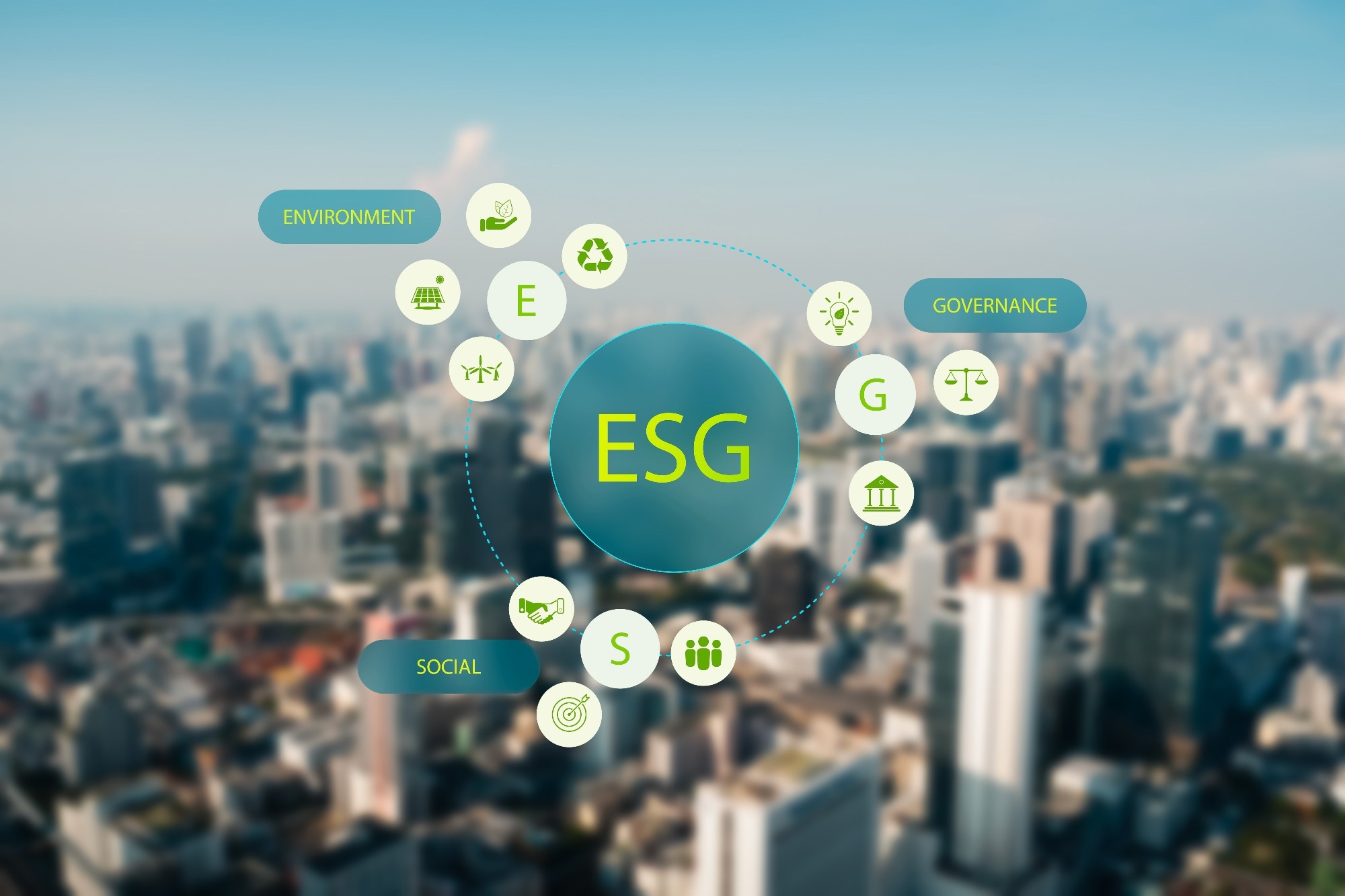Meeting ESG (Environmental, Social, and Governance) standards is becoming a core operational requirement in construction. Regulatory frameworks are tightening, investors are more focused on risk transparency, and clients increasingly want assurance that sustainability and social responsibility commitments are being met - not just stated.

Image Credit: Mark B Pixels/Shutterstock.com
Construction poses unique challenges in this space. Projects are distributed across multiple locations, each with different subcontractors, local conditions, and operational realities. Materials come from a wide range of sources, and workforce structures often change from site to site. This level of complexity makes it difficult to consistently apply ESG policies across a portfolio of projects, let alone document and prove compliance under regulatory pressure.
To meet the new standard, construction firms need more than policies and reports. They need systems that integrate ESG practices into everyday project execution and provide a reliable trail of evidence that these practices are being followed on the ground.
Download your PDF copy now!
The Compliance Challenge in Construction
Unlike controlled environments such as factories or corporate offices, construction sites operate under constantly shifting conditions. That variability complicates ESG monitoring. Different projects may rely on different suppliers, deal with local labor laws, or manage environmental risks that vary by region or terrain.
At the same time, regulations are becoming more specific. Directives like the EU Deforestation Regulation (EUDR) and the Corporate Sustainability Reporting Directive (CSRD) require companies to prove that materials were ethically sourced, that labor standards are upheld, and that environmental impacts are measured and minimized.1,2 For construction firms working across jurisdictions, this introduces a layer of compliance complexity that traditional systems aren’t built to manage.
Documentation is no longer a formality - it’s a core part of regulatory and reputational risk management. Without verifiable data, even well-intentioned sustainability efforts can fall short in the eyes of auditors, clients, or investors.1,3
Turning ESG Standards into Site-Level Practice
Meeting ESG goals in construction is heavily reliant on translating existing policies into consistent, verifiable actions across every job site. That means having reliable data on where materials come from, how they’re used, and whether social and environmental obligations are being met throughout the supply chain.
Take material sourcing, for example. It’s no longer enough to declare that timber is certified or steel is low-carbon. Project managers increasingly need to show sourcing documentation tied to individual deliveries, backed by data such as batch numbers, origin records, and transport logs.
The same applies to labor. Regulatory frameworks and client expectations are pushing for greater visibility into employment practices. That includes proof of safety training, fair wages, legal working hours, and third-party labor certifications. For companies that rely heavily on subcontractors, managing and verifying this information in real time is both necessary and difficult.
Environmental compliance adds another layer. On-site emissions, water usage, waste disposal, and land impact all fall under scrutiny. These factors need to be tracked, measured, and linked to project-level reporting so that sustainability claims can be validated.
The Building Blocks of Effective ESG Traceability
Traceability is one of the most effective ways to connect site-level activity to ESG commitments. Rather than serving as a standalone initiative, it supports the broader goal of operationalizing ESG standards by tying together material flow, labor management, and environmental data.
This starts with consistent record-keeping. Moving from paper logs or disjointed spreadsheets to digital systems improves both the accuracy and accessibility of ESG data. For materials, assigning batch identifiers helps track origin and status throughout the project lifecycle. For labor, maintaining digital records of who is on-site, their certifications, and their training status can help flag potential compliance risks early.1,4
In some regions, GPS or geospatial validation is becoming critical. Construction firms working on projects in or near environmentally protected areas may need to prove that materials weren’t sourced from restricted zones or that site activities comply with land use regulations.

Image Credit: Thapana_Studio/Shutterstock.com
Traceability is not just about knowing what happened - it’s about being able to prove it happened the right way, with verifiable records that hold up during audits, stakeholder reviews, or third-party verification.
Moving ESG Compliance into Digital Systems
One of the biggest challenges in ESG reporting is data fragmentation. Construction teams often collect data in isolated formats - PDFs, spreadsheets, siloed systems - that are difficult to aggregate or audit. This slows down reporting, increases error risk, and creates inconsistencies between what’s happening on-site and what’s being reported at the corporate level.
Integrated ESG platforms are changing that.1,5 Tools like Workiva, IBM Envizi, and Neoeco are designed to bring ESG data into one centralized environment.5,9 These platforms can automate data collection, perform consistency checks, and align reporting outputs with standards like GRI, CSRD, or ISSB.
For construction firms managing multiple projects across regions, these systems also improve collaboration between departments - compliance, operations, finance - ensuring that everyone is working from the same data foundation. When connected to procurement, HR, and project management tools, ESG tracking becomes part of routine operations, not an add-on at the end of a quarter.6,7
Beyond reporting tools, emerging technologies are making real-time ESG monitoring more practical and precise. IoT sensors can track energy use, temperature, or emissions on-site, providing a constant stream of environmental data.1,11 Wearables help monitor workforce safety and movement, ensuring compliance with labor standards and reducing risk in physically demanding environments.8
Blockchain adds another layer by creating permanent, tamper-proof logs of key events, such as the sourcing of materials or the onboarding of subcontractors. In high-risk areas of ESG reporting, this kind of immutable verification can be a valuable safeguard.6,7
These technologies don’t replace compliance systems; they enhance them. By embedding verification into daily workflows, they make ESG standards easier to meet without creating an excessive administrative burden.
Practical Next Steps
For firms ready to operationalize ESG, here’s how to start:
- Review Subcontractor Vetting Processes: Ensure subcontractors meet ESG criteria, including labor and environmental standards.
- Implement Pilot Programs: Start small with a single project to test digital traceability systems.
- Adopt Digital Tools: Compare ESG platforms for integration, scalability, and reporting capabilities.
- Train Teams: Educate site managers and procurement staff on ESG compliance requirements.
- Engage Stakeholders: Collaborate with suppliers, clients, and regulators to align on sustainability goals.
ESG as an Operational Standard, Not Just a Report
The shift in ESG expectations is clear: stakeholders want to see measurable impact, not just stated intentions. For construction firms, that means ESG compliance must be managed as part of core operations. Site managers, procurement leads, and project teams all play a role, not just sustainability officers or compliance departments.
The companies that lead in this space are the ones treating ESG as a project delivery requirement, not a reporting task. They’re integrating traceability into logistics, using digital systems for labor tracking, and adopting technologies that create transparency without slowing down progress.
Ultimately, ESG success in construction depends on execution. It’s not just about proving the work was done ethically and sustainably - it’s about making that standard part of how the work gets done in the first place.
Download your PDF copy now!
Want to Learn More?
If you're looking to deepen your ESG strategy or strengthen on-site compliance, outlined below are a few areas worth exploring:
References and Further Reading
- Traceability for ESG Compliance: Meeting EUDR & CSRD Goals. (2024). Blockchain for Food Safety, Traceability and Supplychain Transparency. https://tracextech.com/traceability-for-esg-compliance/
- Cohen, E. Boost Resource Responsibility with ESG Traceability. Cloud Quality Management Software for Regulated Industries | Q-Hub. https://www.q-hub.app/blog/esg-integrated-traceability-boosting-resource-responsibility-gm1623
- Ahmad, H. et al. (2023). Environmental-, social-, and governance-related factors for business investment and sustainability: A scientometric review of global trends. Environment, Development and Sustainability. DOI:10.1007/s10668-023-02921-x. https://link.springer.com/article/10.1007/s10668-023-02921-x
- The Role of Traceability in Critical Mineral Supply Chains. International Energy Agency. https://www.oecd.org/content/dam/oecd/en/publications/reports/2025/02/the-role-of-traceability-in-critical-mineral-supply-chains_4e5cc44a/edb0a451-en.pdf
- 8 Best Tools for Managing ESG Compliance in 2025. (2025). Planet Compliance. https://www.planetcompliance.com/esg/best-tools-esg-compliance/
- Liu, L. et al. (2024). Trust in ESG reporting: The intelligent Veri-Green solution for incentivized verification. Blockchain: Research and Applications, 5(2), 100189. DOI:10.1016/j.bcra.2024.100189. https://www.sciencedirect.com/science/article/pii/S2096720924000022
- Lim, T. (2024). Environmental, social, and governance (ESG) and artificial intelligence in finance: State-of-the-art and research takeaways. Artif Intell Rev 57, 76. DOI:10.1007/s10462-024-10708-3. https://link.springer.com/article/10.1007/s10462-024-10708-3
- 5 Ways to Enhance ESG Visibility and Traceability Across Your Supply Chain | GEP Blogs. (2023). GEP. https://www.gep.com/blog/technology/esg-visibility-and-traceability-across-supply-chain
- 2025 ESG Reporting Tools Comparison Guide. (2025). ISSB & CSRD Reporting Software for Enterprises | neoeco. https://neo.eco/resources/articles/2025-esg-reporting-tools-comparison-guide
- Ibrahim, Nurul Huda Razib. et al. (2025). The role of data analytics in enhancing ESG transparency in the corporate sector of Bangladesh. Global Journal of Engineering and Technology Advances, 22(1), 081–093. DOI:10.30574/gjeta.2025.22.1.0245. https://gjeta.com/content/role-data-analytics-enhancing-esg-transparency-corporate-sector-bangladesh
- Gelderman, C. J. et al. (2021). The impact of buying power on corporate sustainability - The mediating role of suppliers’ traceability data. Cleaner Environmental Systems, 3, 100040. DOI:10.1016/j.cesys.2021.100040. https://www.sciencedirect.com/science/article/pii/S2666789421000325
Disclaimer: The views expressed here are those of the author expressed in their private capacity and do not necessarily represent the views of AZoM.com Limited T/A AZoNetwork the owner and operator of this website. This disclaimer forms part of the Terms and conditions of use of this website.